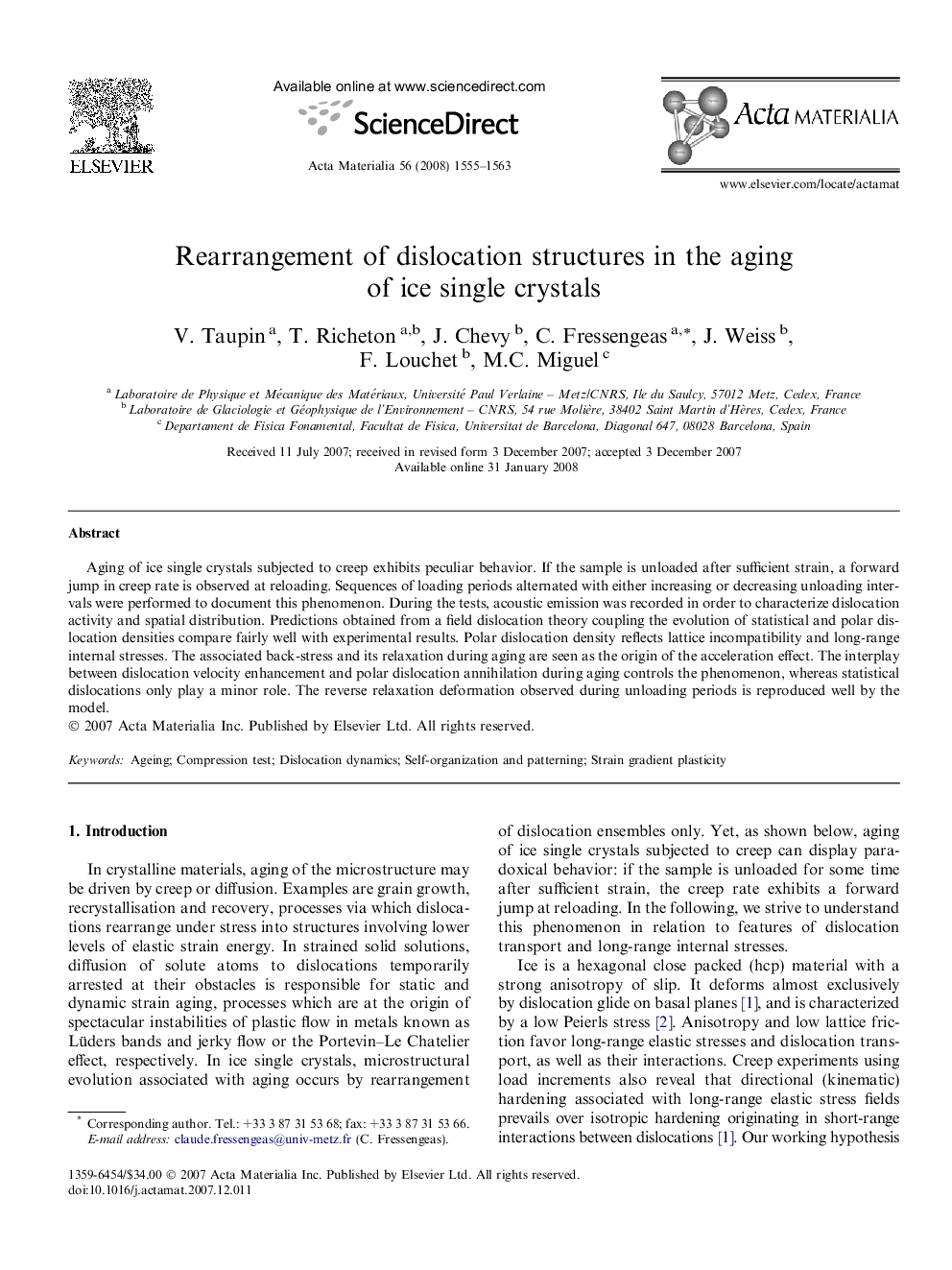| Article ID | Journal | Published Year | Pages | File Type |
|---|---|---|---|---|
| 1450477 | Acta Materialia | 2008 | 9 Pages |
Aging of ice single crystals subjected to creep exhibits peculiar behavior. If the sample is unloaded after sufficient strain, a forward jump in creep rate is observed at reloading. Sequences of loading periods alternated with either increasing or decreasing unloading intervals were performed to document this phenomenon. During the tests, acoustic emission was recorded in order to characterize dislocation activity and spatial distribution. Predictions obtained from a field dislocation theory coupling the evolution of statistical and polar dislocation densities compare fairly well with experimental results. Polar dislocation density reflects lattice incompatibility and long-range internal stresses. The associated back-stress and its relaxation during aging are seen as the origin of the acceleration effect. The interplay between dislocation velocity enhancement and polar dislocation annihilation during aging controls the phenomenon, whereas statistical dislocations only play a minor role. The reverse relaxation deformation observed during unloading periods is reproduced well by the model.
